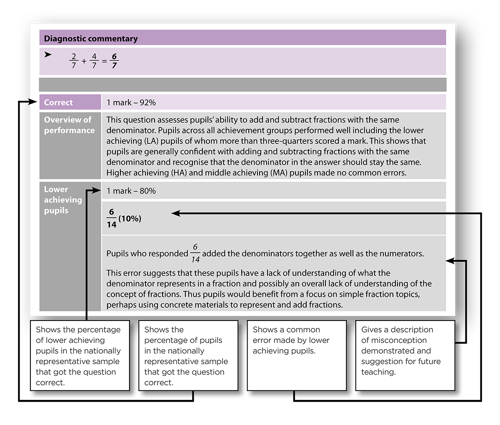How is diagnostic assessment positioned in the new Ofsted inspection framework?
In this ‘Ask the expert’, NFER’s Liz Twist clarifies how assessment is positioned in the new Ofsted inspection framework and introduces brand new diagnostic guidance from NFER to help teachers get even more from their assessments.
Ofsted’s most recent inspection framework was introduced in September 2019. This has been much heralded and provides a renewed focus on the curriculum – what HMCI Amanda Spielman has described as ‘the real substance of education’.
In the previous inspection framework, assessment was included under the broad heading of ‘Teaching, learning and assessment’. Now, the overarching heading under which assessment falls is ‘Quality of education’. Here the focus is on curriculum intent, implementation and impact. This by no means suggests a diminished role for assessment; to the contrary, it means that assessment is an integral part of the process of teaching and learning. It is not an ‘add on’ by which the success of all that has gone before is judged; rather, it informs the process of teaching.
NFER assessment specialists have been undertaking some very detailed work analysing pupil responses to our new NFER Tests for years 1, 2 and 6. This complements and extends material already provided for the spring tests for years 3, 4 and 5 that teachers have told us they find very useful. The work focuses on identifying common errors and determining whether they reflect particular misconceptions held by pupils. Teachers are able to compare their school’s data to that from a nationally representative sample.
The value of this work is reinforced in the implementation section of the new Ofsted framework:
“[teachers] check learners’ understanding systematically, identify misconceptions accurately and provide clear, direct feedback. In doing so, they respond and adapt their teaching” (p9)
“teachers and leaders use assessment well, for example to help learners embed and use knowledge fluently or to check understanding and inform teaching” (p10)
Here is a sample of the type of guidance you will find in our new year 6 diagnostic guidance booklets for maths.

This information can be used effectively, at both class and school level, with reference to not only the implemented curriculum, but also the intended curriculum. Pinpointing a particular misunderstanding held by a group of pupils facilitates efficient remediation by the teacher; where the data indicates underperformance in a particular area of the curriculum then the school’s subject lead may identify an adjustment needed to the intended curriculum’s sequence and progression, time allocations or resources.
Diagnostic assessment used in this way is incredibly valuable to teachers. It offers accessible and tailored advice aligned to the specific misconception, and maximises the benefit from assessments by using the data for both summative and diagnostic purposes.
More information about NFER’s materials on diagnostic assessment is available here.
Written by Liz Twist, Head of Assessment Research and Product Development at NFER
With over 20 years’ experience in assessment development and research, Liz leads the teams developing NFER’s popular assessment products and research. She has also previously worked as deputy head of a combined school and taught both primary and secondary school pupils.
Do you have a question on assessment that you’d like to put to one of our assessment team? Send it through to us at [email protected].
